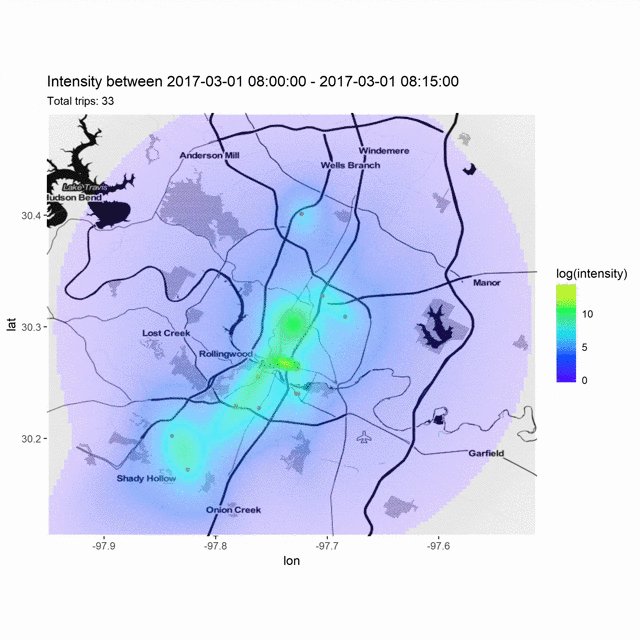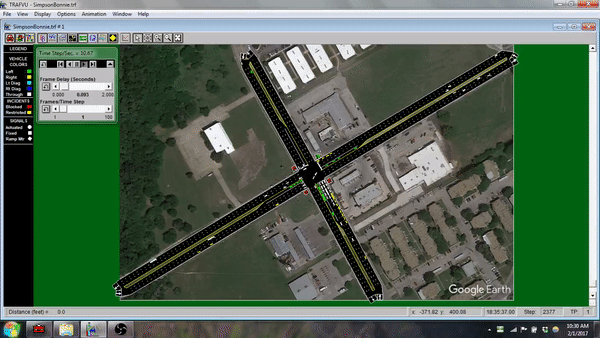This section provides information about my main research projects.
Modeling Ride-Sourcing Trips Demand
In this project, I work along with Mauricio Tec, a Ph.D. candidate in Statistics and Data Sciences at UT-Austin. The principal objective is to provide a methodological framework to track the intensity of ride-sourcing demand. We model the trips as a Poisson point process and use dynamic mixtures models approach to estimate the trip density. We used an on-line non-parametric Bayesian method to learn the model parameters. To evaluate the model, we used the data that an Austin-based transportation network company (TNC) made available for trips during the period that Uber and Lyft were out of the city. This information can provide valuable insights into the ride-sourcing trips in Austin.
 |
| Ride-sourcing trips intensity changes during a typical day in Austin, Texas. |
Transit Performance and Reliability Evaluation for Arterial Corridors
The main objective of this research is to develop an evaluation tool to provide transit performance and reliability information for arterial corridors in Austin, Texas. The evaluation is based on the fusion of the three main transit open data sources, including Automatic Vehicle Location (AVL), Automatic Passenger Count (APC) , and General Transit Feed Specification (GTFS) datasets. Further, the analysis presented provides the exploration of different transit performance metrics and data visualization methods for corridor-level evaluation.
 |
| Average dwell time estimation per corridor for June during years 2016 and 2017, City of Austin, Texas. |
Work Zones Traffic Analysis
For this project, we aim to estimate the user delay cost for construction projects. The first step consists of volume-data gathering and processing. We obtain 24-hour volume information for the area of interest using historical traffic data. Then, we project this data to the year 2018 and estimate the average hourly-volume for four different periods: AM peak, PM peak, day off-peak, and night off-peak. Further, we implement different micro-simulation scenarios using the TSIS-CORSIM software. These scenarios provide us with delays estimation, and we can approximate user delay costs.
 |
| Example of a microsimulation in an intersection in Dallas, Texas. |